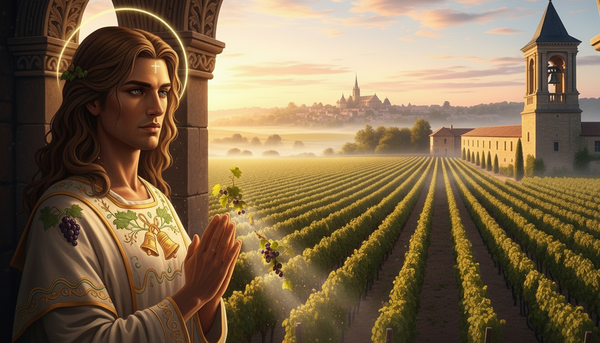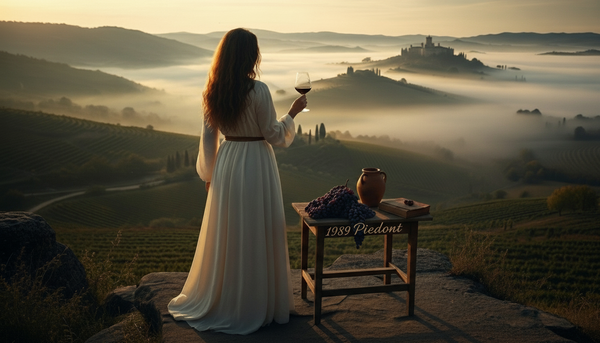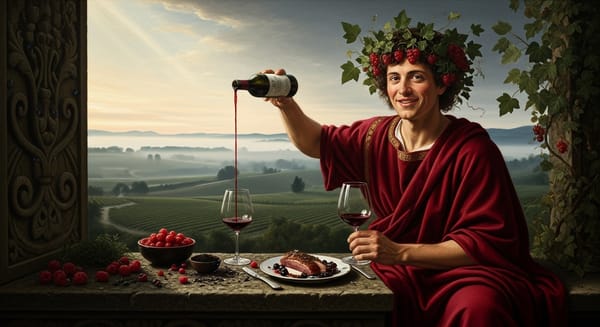The Tears of Kings: Why Vin de Constance 2018 is Divine Currency
Vin de Constance 2018 is pure history in a glass. Unfiltered tasting note, food pairings, and long-term investment analysis.

Some bottles are merely wine. Others are a historical artifact that happens to taste like liquid sunshine—a lineage that predates the very idea of a modern wine industry. If you haven't yet pulled the cork on the Klein Constantia Vin de Constance 2018, you're not just missing a glass of sweet wine; you’re skipping a masterclass in history, viticulture, and pure, decadent seduction. This isn't dessert wine for beginners; this is the sweet nectar that fueled Napoleon's exile and seduced the courts of Europe. And I’m telling you, the 2018 vintage is demanding its seat at the table of the Immortals. Stop chasing ephemeral trends and get yourself a taste of immortality, you philistine.
Golden Tears in the Crystal Globe
Hold this up to the light and forget about the usual pale gold of lesser whites. This is molten amber with a flirtatious edge of burnished copper, a color so intense it looks like a god’s bathwater. It’s dense, viscous, and moves in the glass with the heavy, reluctant tears of a millionaire saying goodbye to his last million.
The nose? It doesn't just whisper; it presents a full-scale, Baroque opera of fragrance. Think dried apricot, candied orange rind, honeysuckle, and a flash of ginger. But wait, there’s an undercurrent of something profound: tea leaves steeped in a honeyed, coastal fog, a twist of crème brûlée crust, and that exotic hint of vanilla bean and cardamom that you only get from perfectly botrytized Muscat. It smells like a well-traveled antique chest filled with spices and forgotten love letters.
The Palate: The Hammer and The Velvet Glove
First sip, and the word is texture. This wine doesn't hit your tongue; it envelops it like a perfectly tailored silk robe. It's thick, rich, and immediately decadent, yet the electrifying acidity is the steel core that keeps the whole thing from collapsing into syrup. The balance is surgically precise—a tightrope walk between lashing sweetness and racy tension.
The flavor profile is relentless: mango chutney, grilled pineapple, apricot preserve, a subtle saline flicker from the nearby ocean, and a haunting, almost savory note of saffron. The Muscat grape’s floral signature is woven in, but it’s anchored by deep, tertiary layers that taste like pure time. This isn't just sugar; it's a structural masterpiece that gives you everything you want—opulence, complexity, and a finish so long you’ll forget the middle of the tasting note. You don’t drink this wine; you let it perform on your palate.
The Secret History of the Constantia Valley
You need to understand the mythos behind this wine. Vin de Constance isn't some clever modern marketing gimmick. It’s the rebirth of a legendary wine that vanished. The original Constantia wines were arguably the first great New World luxury product, adored by everyone from Jane Austen to Frederick the Great. Then the vines got hit, the winery fell, and the wine was a ghost for over a century.
Klein Constantia literally resurrected this nectar from history, using original records and old Muscat de Frontignan plantings. The 2018 vintage? It was a year of perfectly balanced drought and heat—tough conditions that stress the vines to produce tiny, concentrated berries, followed by a cool, drawn-out harvest. This wasn't easy winemaking; this was meticulous, almost religious farming that forces the grapes to develop that signature botrytis concentration and maintain a blazing acid profile despite the ripeness. This wine is the liquid embodiment of stubborn, beautiful defiance.
How to Drink Immortality
Serve this chilled, but not ice-cold— in a proper white wine glass, not those tiny thimbles everyone uses for sweet wine. No decanting needed, but once you pull that cork, the air is your friend.
Food pairing? Stop thinking about your sad fruit tart. This wine demands savage elegance. I’m talking about seared foie gras with a caramelized fig jam, where the fat meets the acid and the sweet fruit plays off the savoury umami. Or try it with a pungent, well-aged blue cheese like Roquefort or a funky Gorgonzola. The salt-and-funk clash with the apricot sweetness, and the acidity cleans the slate for the next bite. If you’re feeling philosophical, a single piece of dark, high-cacao chocolate will make the Vin de Constance sing in a low, thunderous baritone.
The Smart Man’s Cellar Strategy
Let's not play coy. This is a blue-chip asset for your cellar. It consistently racks up high 90s scores from every serious critic on the planet. Its scarcity is real—the production is minute compared to the demand from every collector and enthusiast who knows its history.
The longevity is absurd. This bottle has the sugar and, more importantly, the electric acidity to evolve for decades—think 30, 40, even 50 years. This isn’t a wine you hold for five years to flip. This is a wine you buy for your grandchildren to drink at your funeral. Buying the 2018 now, while its price is still a fraction of its potential peak, is a move of supreme, cultured intelligence.
Final Word: Don't Be a Historical Footnote
You will run into this wine again, perhaps on an auction sheet ten years from now, with an extra zero tacked onto the price. You'll regret it then. The 2018 Vin de Constance is a taste of history, a lesson in terroir, and a guarantee of pleasure that few bottles can match. It’s patience and poetry in a glass. Buy two: drink one now with your best friend, and put the other down to prove I was right. Don't be the cautionary tale—be the goddamn hero.





